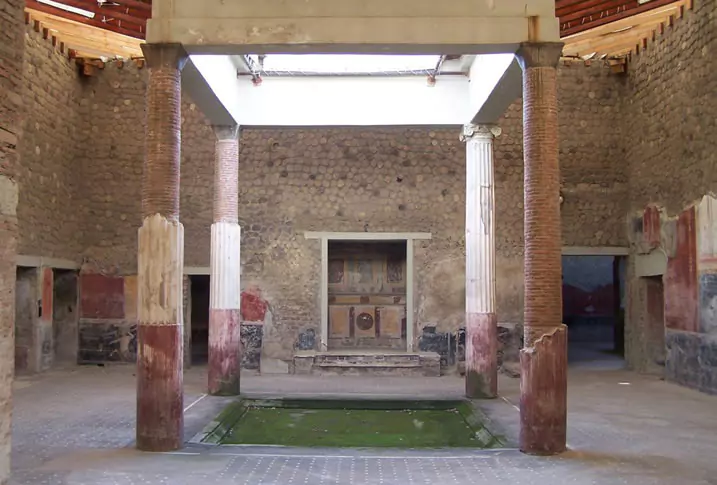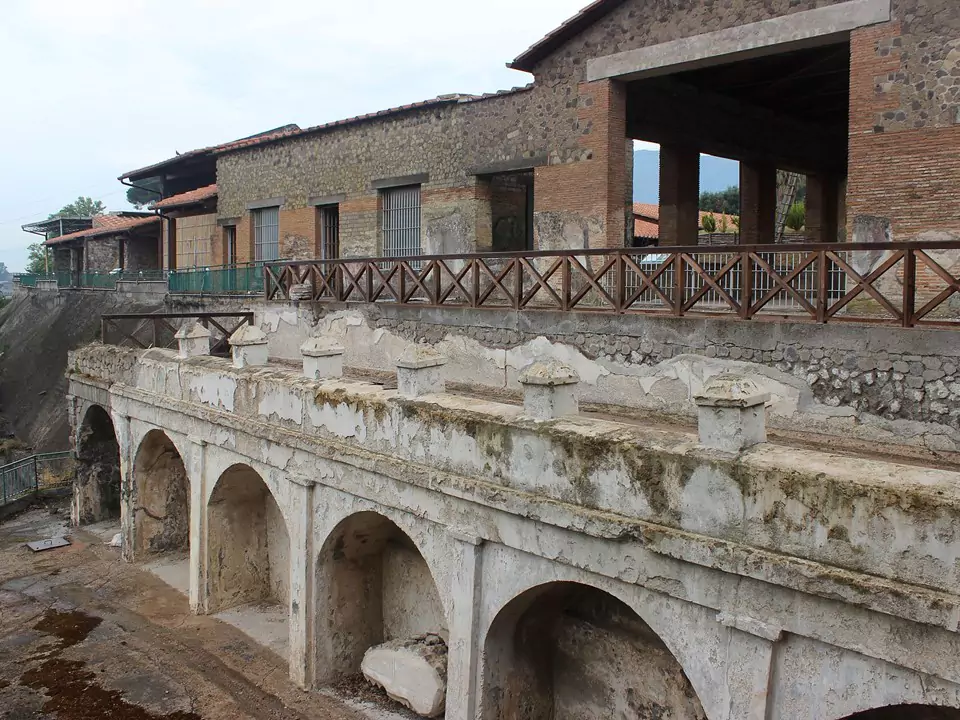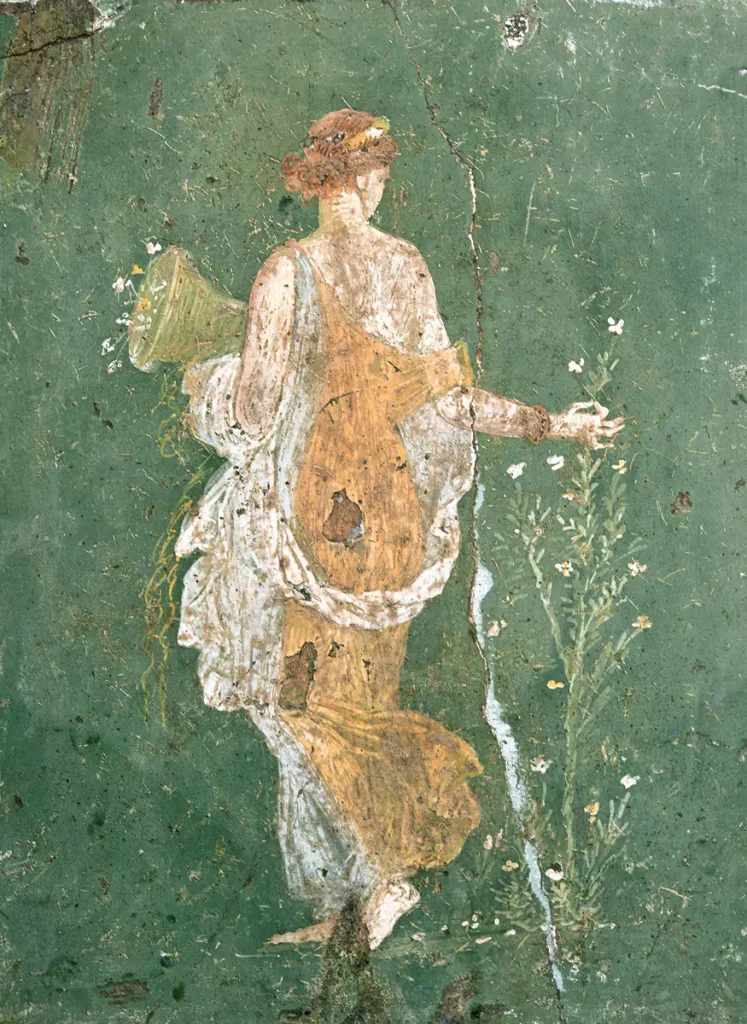Looking for a muse? Check no further. Discover the Best of Art, Culture, History & Beyond!

Villa Arianna at Stabiae: An Archaeological and Artistic Treasure
Villa Arianna, an ancient Roman villa located in Stabiae (modern-day Castellammare di Stabia, Italy), stands as a testament to the opulence and artistic sophistication of the Roman elite. Overlooking the Bay of Naples, this luxurious residential complex, with its stunning frescoes and intricate architectural design, offers a glimpse into the lifestyle of the wealthy in the first century AD.
Discovery and Excavation History
The first official excavations at Stabiae began on June 7, 1749, under the orders of King Charles of Bourbon, who commissioned Rocco Gioacchino d’Alcubierre, a military engineer, to explore the Varano hill. The excavation of Villa Arianna specifically started on October 1, 1757, under the direction of the Swiss engineer Karl Weber and continued until 1762, with further investigations in 1775.
During this period, the excavation methods were mainly open-air trenches, but, as was customary at the time, once valuable artifacts, frescoes, and mosaics were extracted, the site was reburied. The removed items became part of the Bourbon royal collections. In 1931, erosion and agricultural work led to the re-emergence of structures at the site, but it was not until 1950, under the leadership of Libero D’Orsi, that systematic excavations resumed, lasting until 1962.
D’Orsi’s efforts were crucial in safeguarding Stabiae’s archaeological heritage, particularly during a period of rapid urban expansion that threatened to destroy ancient remains. His work not only preserved Villa Arianna but also set the foundation for modern archaeological studies in the region.

Architectural Structure and Evolution
Villa Arianna, dating back to the 1st century BC, originally followed a Vitruvian suburban villa model, similar to Pompeii’s Villa of the Mysteries. The earliest part of the complex included:
- Entrance (W13)
- Quadrangular peristyle (W22)
- Tuscan atrium (24) with an impluvium (rainwater-collecting basin)
During the Flavian period (69-79 AD), the villa underwent significant expansions, incorporating:
- An adjacent peristyle (H)
- Panoramic rooms (11-L) that connected older and newer structures
- A thermal quarter, featuring a calidarium (hot bath) with an apse (6)
Later excavations between 2008 and 2011 uncovered more details, including gardens with rectangular flowerbeds, separated by beaten-earth pathways, and grand peristyle porticoes resembling those found in ancient gymnasiums.
At the time of Mount Vesuvius’ eruption in 79 AD, architectural and decorative renovations were likely in progress, as evidenced by unfinished construction.

Frescoes and Roman Painting Styles
Villa Arianna is particularly renowned for its wall paintings, which reflect various Pompeian painting styles. Unlike the Bourbon-era excavators, who primarily sought out Third and Fourth Style frescoes, the site also preserved Second Style wall decorations, providing insight into evolving artistic trends.
Among the most famous frescoes are the mythological and female figures, discovered by Karl Weber in 1759 in cubiculum W26:
- Flora (or Primavera) – A young woman collecting flowers and placing them in a basket, depicted against a green background (Fig. 2).
- Leda and the Swan – Leda, draped in flowing pink garments, holds the swan affectionately (Fig. 3).
- Medea – Presented as a contemplative figure, rather than a vengeful sorceress, wearing a yellow tunic with a golden mantle.
- Artemis (or possibly Venus) – Shown in a golden robe, in a pose reminiscent of classical Greek ceramics.
These exquisite paintings, with their elegant drapery, delicate shading, and minimal background details, became influential models for Neoclassical art in the 18th and 19th centuries.

The Significance of Villa Arianna
The rediscovery and ongoing excavations of Villa Arianna highlight the cultural and environmental factors that made Stabiae an attractive site for Roman elite villas:
- Fertile soil suitable for agriculture
- Mild climate conducive to year-round living
- Proximity to fresh water sources and thermal springs
- Scenic coastal views, making it an ideal retreat
Pliny the Elder, in his Natural History (III, 70), described how Stabiae transitioned from a thriving town to an area dominated by luxurious villas:
“in Campano agro Stabiae oppidum […] delevit, quod nunc in villa abiit”.
(“The town of Stabiae in the Campanian region… was destroyed and has now become a place of villas.”)
Villa Arianna remains a crucial site for understanding Roman luxury architecture, daily life, and artistic traditions. The villa’s remarkable frescoes and architectural innovations not only demonstrate the wealth and taste of its ancient owners but also serve as a touchstone for modern studies in Roman archaeology and art history. With continued excavations and preservation efforts, Villa Arianna continues to offer valuable insights into one of the most fascinating periods of the ancient world.

This article is published on ArtAddict Galleria, where we explore the intersections of art, history, and culture. Stay tuned for more insights and discoveries!



